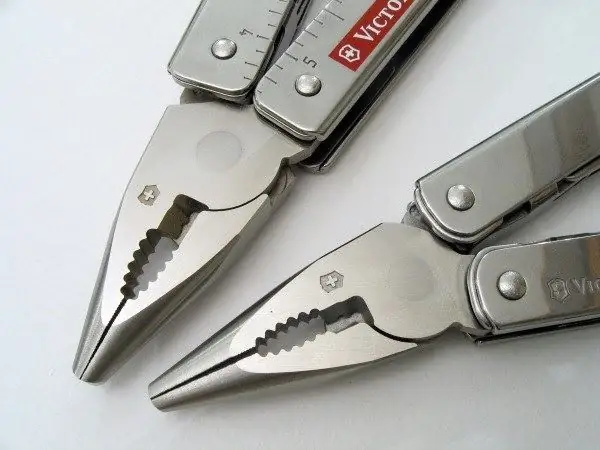Pliers and pliers are common tools that can be found on many owners. Some people think that these names are synonymous, but in reality they are not.

Pliers
Pliers, which are hand-held tools, got their name due to the shape of the working surface, made in the form of two planes, tightly adjacent to each other along the entire length. A notch is applied to the inner surface of each of them, which makes it possible to ensure the reliability of gripping the part in the process of working with it. In this case, the working surface has the same profile along the entire length of the tool.
The main function of the pliers is to grip and twist various parts, as well as wires or wires. This tool is often used when carrying out electrical work. Therefore, usually its handles are coated with a special material that provides a sufficient level of isolation from electrical voltage.
A notable feature of the pliers is that their working surface has a shape that is wider at the hinge and tapering towards the end. This allows small parts to be gripped by the nose of the pliers and to apply significant force using the tool as a lever when gripping the part with the part closer to the hinge.
Pliers
Pliers are a pliers-type tool that is widely used both for household work and among professionals - locksmiths, electricians and representatives of other activities. It is equipped with two handles, which in most cases are made of a special material to provide the necessary resistance for performing electrical work. In some cases, rubber inserts are additionally made on the handles so that the tool is comfortable to hold.
However, the pliers handles in most cases look pretty standard in comparison with other tools. Their main difference from other tools is the shape of the working part. Pliers jaws have several types of surfaces at the same time: for example, the end of the jaws is tightly adjacent planes that are used to grip objects used in work, and the middle part is made in the form of an oval toothed groove that can be used to turn the nuts, bolts or other parts. Finally, in the part adjacent to the joint of the pliers, there is a special recess of the corresponding shape, designed for working with round parts. It can also be used for wire cutting.
Thus, the pliers are a multifunctional tool, on a small working surface of which there are three functional zones at once. This allows the pliers to be used as pliers, cutters and turning tools.







